Army Explores Robot Decoys & Cannon-Fired Jamming Pods
Posted on
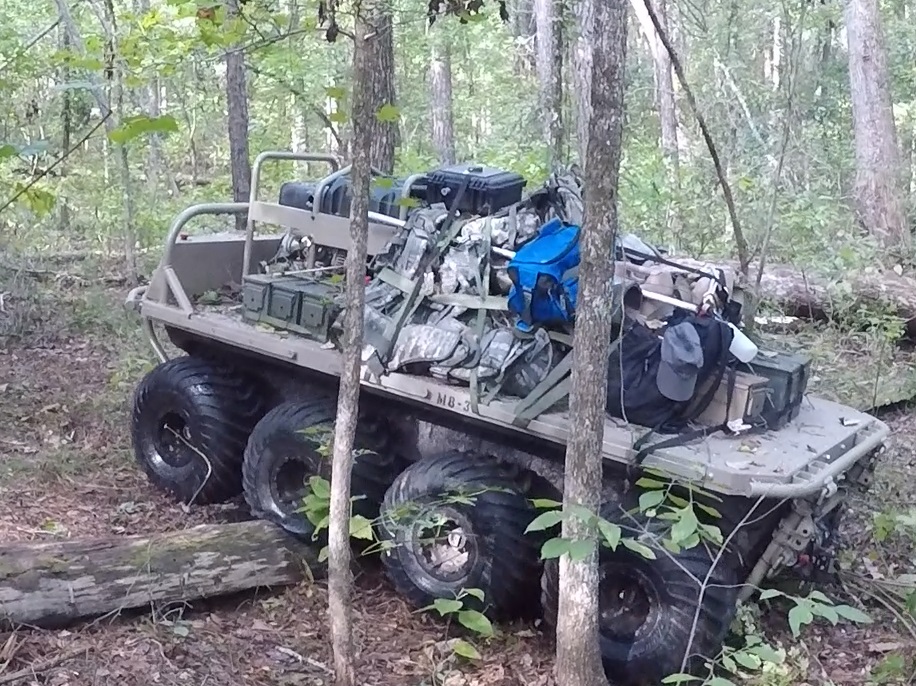
A prototype General Dynamics robot crawls through the woods in a field test.
TECHNET AUGUSTA: In a future war zone, an American tank column rolls up the road into enemy territory. At a fork, the tanks turn left — but each one drops off a small tracked robot that goes right. The manned vehicles switch off their long-range radio transmitters, going dark to enemy direction-finding sensors, while the robot decoys chatter away merrily on all wavelengths to draw attention from the real unit. When the enemy’s precision-guided rockets rain down, they blow up the bots while the manned vehicles move, undetected and unmolested, around the flank.
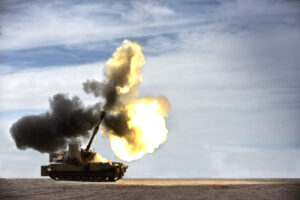
The upgraded M109A7 Paladin fires during a test in Yuma, Arizona
Miles away, armored Paladin howitzers begin a long-range barrage in support of the tank attack. Most of the rounds they fire are rocket-boosted, precision-guided shells, homing in on targets pinpointed by drones and forward scouts with AI-assisted targeting goggles. But a few shells have shock-hardened transmitters instead of explosive warheads: When they hit, they don’t blow up, but instead start jamming nearby enemy radios and radars, or sending decoy transmissions to make it look like airborne troops have landed.
With the enemy’s anti-aircraft batteries blinded by jamming, blasted by artillery, or overrun by the tanks, the air assault sweeps in: helicopters or future high-speed aircraft loaded with infantry to clear the targeted compound room by room. While the main force heads for the landing zone (LZ), a soccer field, a few choppers and drones split off and make for other plausible LZs — a multi-story parking lot, a park, a highway junction — where they drop off more decoys. A bulky pod mimics the transmissions of a forward command post. Mobile mini-bots scuttle off, transmitting on the same portable radios used by an infantry squad.
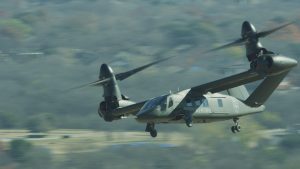
Bell V-280 Valor, the leading candidate for the Future Long-Range Assault Aircraft
As the enemy counterattacks what turns out to be an LZ occupied only by unmanned transmitters, the real infantry kick in the door of their headquarters. The troops grab laptops full of vital intelligence before the startled HQ staff can wipe the hard drives.
Now, the Army doesn’t have the kit today to wage this kind of complex multi-domain battle, combining land, air, and cyber/electronic warfare. But it’s studying all the concepts above: cannon-launched jamming pods, air-droppable dummy command posts, mobile robots pretending to be both tanks and infantry squads. Much of the required technology turns out to be remarkably mature, the Army’s capability manager for electronic warfare told the TechNet Augusta conference here.
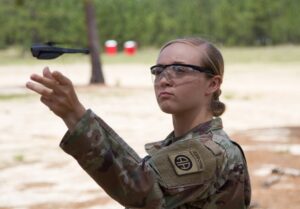
An 82nd Airborne soldier trains with a Black Hornet mini-drone before deploying to Afghanistan.
“For the deception capabilities, some of these things are very high TRL [Technological Readiness Level],” Col. Mark Dotson said. “[Some], we could almost buy commercially off the shelf or will require very little in terms of integration.” If Army leaders approve a preliminary requirements document and funding, prototypes could be tested in field experiments “within the next two to three years,” he said, followed by refinement and potential mass production.
In fact, Dotson told me after his talk, he and other officials are now working out whether the near-term decoy capabilities are sufficiently well-defined to rush some into the field as what the Army calls a Quick Reaction Capability (QRC).
“Let’s get something out that’s a pre-prototype, so we can play with it, so we can figure out how to build our [formal] requirement,” Dotson told me. “Once those get out there, that’ll help inform what it is that we’re doing.”
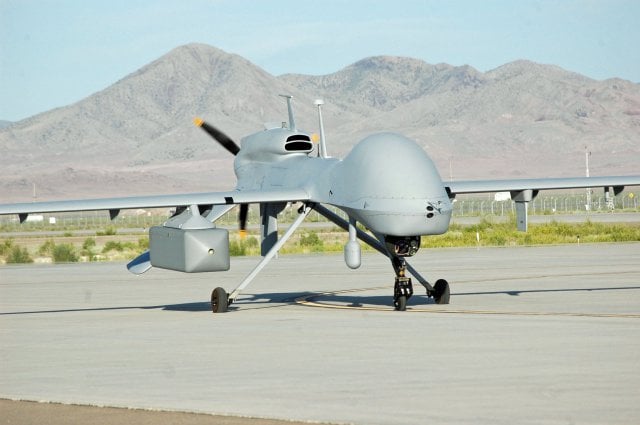
The Army’s NERO program tested a converted Navy jammer on a Grey Eagle drone, the Army version of the Predator.
Jamming, Jamming
The deception capabilities will be just one part of a larger family of electronic warfare systems the Army is now developing. The service got rid of its Cold War arsenal of high-powered jammers in the 1990s, then built a tremendous number of short-range CREW jammers in the 2000s to protect its vehicles from radio-controlled roadside bombs. But it’s only recently begun fielding small batches of experimental long-range jammers to attack enemy communications networks.
Right now, Army electronic warfare soldiers have so little equipment to do their jobs with that they’re routinely reassigned to mundane duties and make-work, with the running joke that “EW” just stands for “extra worker.” To give them tools to do their actual work with, there are three main programs of record:

Electronic Warfare Planning & Management Tool (Army concept)
The Electronic Warfare Planning and Management Tool (EWPMT) is a software kit, being developed by Raytheon, for EW command and control. EWPMT allows Army electronic warfare troops to collect data from sensors across the battlefield, locate and identify enemy emitters, and send targeting data either to US long-range jammers — although few of those exist as yet — or to the artillery fire control system, AFATDS, to blow them up. The more powerful the computer you install it on, the more features you can use, up to a powerful modeling suite to calculate how transmissions and jamming interact with terrain features as they propagate across the battlefield.
A “lite” version known as Ravenclaw is in service with select units, having been rushed out as a Quick Reaction Capability. The program is giving upgraded versions to troops for hands-on testing every three months, folding their feedback into the next revision. (One of these sessions is happening just this week).
“The users are literally helping design the system that allows them to do their primary function,” the program manager, Lt. Col. Jason Marshall, told reporters at Aberdeen Proving Group last Friday. So what’s the feedback from EW soldiers so far? Marshall summed it up as: “We really like this tool. We know it’s not perfect, but this is the first tool that allows us do our jobs.”
By the next major upgrade, Capability Drop 3, EWPMT will be robust enough to issue Army-wide as part of a larger program called the Command Post Computing Environment (CPCE), starting later this year. But there won’t yet be a lot of long-range jammers for EWPMT to command — which is where the next two programs come in.
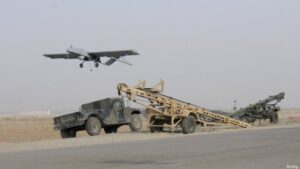
Launching a Shadow drone from its catapult
The Multi-Function Electronic Warfare (MFEW) Air system is a series of flying jammers, initially on drones:
- Lockheed Martin won a contract in January to develop its Silent Crow EW system into a sensing-and-jamming pod to go on the Army’s variant of the Predator, the Grey Eagle, which belongs to division commanders. This is the first iteration, MFEW-Air Large.
- Next comes MFEW-Air Small, a downsized version for issue to individual combat brigades. Dotson said the Army’s still deciding whether it needs this version ASAP, in which case it has to fit on the existing but aging Shadow drone, or whether it can wait to field it on the forthcoming replacement for the Shadow, FTUAS (Future Tactical Unmanned Aerial System). Different versions may end up on different drones.
- Finally, there’ll be MFEW-Air Rotary, a self-defense jammer installed on Army helicopters and Future Vertical Lift aircraft.
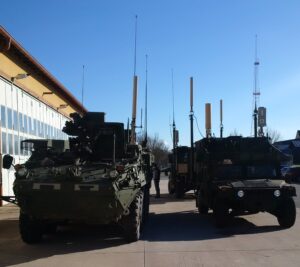
Army 8×8 Stryker (left) and Humvees (right), all mounting variants of the hastily fielded Saber Fury electronic warfare system, a forerunner to TLS.
The Terrestrial Layer System (TLS) is the ground-based system, to be mounted on trucks and/or armored vehicles. It’s the combination of the Signal Intelligence corps’ replacement for their aging truck-borne Prophet sensors, originally called the Terrestrial Layer Intelligence System (TLIS) and an EW corps initiative called MFEW-Ground. So TLS will be able to detect enemy transmissions, then eavesdrop on them, jam them, or relay their location to the artillery for bombardment.
- TLS-Large is the first iteration, with different companies’ offerings soon to compete in a tech demonstration and a production contract possible as early as 2022, with prototypes issued to real units for testing that year or the next. The Army will issue six TLS-Large vehicles per brigade to at least 30 brigades over three to five years in the 2020s. It may then be upgraded to a higher-power, longer-ranged version for issue to divisions and corps, said Brig. Gen. Robert Collins, the Army’s Program Executive Officer for Intelligence, EW, & Sensors (PEO-IEWS).
- TLS-Small will be a downscaled, defensive jammer to go on trucks and combat vehicles. It’ll replace current counter-IED jammers, but it will add the ability to jam some incoming precision-guided missiles as well. It will connect to EWPMT so electronic warfare troops can remote-control it, but normally it will operate automatically, defending the crew of its vehicle — and perhaps nearby ones in the same formation — at machine speeds without them having to monitor it.
- TLS-Individual Protective System will be a further downscaled version for infantry troops to carry into battle, automatically protecting their squad.
- TLS-Extended is the most expansive form of the system, and the one that will take longest to fully implement — but parts of it, like the decoy robots, can be implemented in the next few years. “Extended” refers not only to longer range transmitters, but to an array of drones and bots to extend the reach of the system and its tactical options, particularly for deception.
TLS-Extended, Dotson told the conference, “is really where we’re going to come into EW’s own.”
Subscribe to our newsletter
Promotions, new products and sales. Directly to your inbox.
